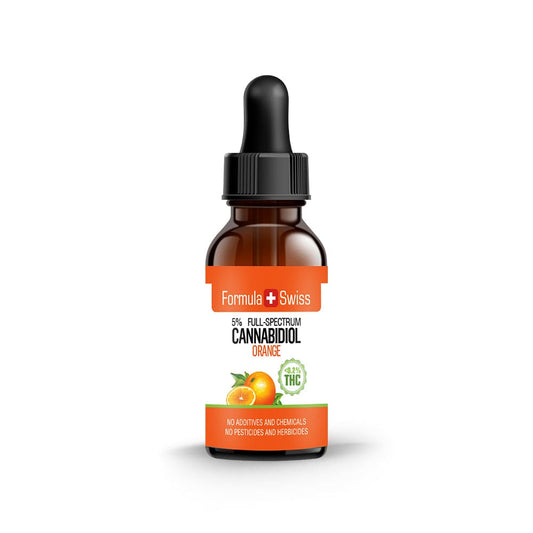General
Most of the cannabinoids we know about come directly from the cannabis plant, which is why they are primarily called phytocannabinoids. As we already know, these phytocannabinoids mainly work through the two known receptors CB-1 and CB-2, which run through our endocannabinoid system. Incidentally, we owe the initial discovery of this system to the scientific work and studies on the subject of cannabis carried out by Dr. Lumir Hanus and his colleague Dr. William Devane. They first came across the wondrous and complex network in 1992 as part of their research at the Hebrew University in Jerusalem.
This important and far-reaching discovery took place so late mainly because of the bad reputation of the cannabis plant, which meant there were legal bans worldwide for many decades.
Even though thirty years earlier (in 1973 to be precise), scientists discovered that our brain has specific cellular binding sites that can are influenced by opioids. This was an important finding for medical professionals! Among other functions, these binding sites, also called opioid receptors, serve as a docking place for endogenous ligands i.e. those that are naturally produced in the body. These opioids produced by the body include dynorphone, endorphin, enkephalin and metorphamide.
Thanks to our opioid receptors, the body is able to suppress reactions such as pain or fear that arise from stressful situations. Some scientists believe that this mechanism has evolved and comes from our sense of survival.
Therefore, it was reasonable to assume that many active substances with similar properties can be useful. Indeed, through this knowledge, the range of scientific areas of use includes pain suppression, muscle tension, panic attacks and lowering blood pressure.
So, what is the link between these receptors and the important endocannabinoids?
While CB1 receptors are especially found in the brain, spinal cord and central nervous system, CB2 receptors are mainly found in organs and tissues and these are important for our immune strength. They are located in the immune cells, the spleen, leukocytes (white blood cells) and also in our tonsils. One of the most important functions of the immune system’s CB receptors is to regulate and model inflammation. Research on CB2 receptors is particularly important for medicine, since selective stimulation can eliminate psychological side effects leading to successful treatment.[1]
Since the early 1990s, scientists have thought that CB1 receptors could be applicable to other areas. Receptors in the central nervous system are mainly on interneurons and these are responsible for motor skills, pain sensation, memory and learning. Researchers at the University of Bonn have also found that CB1 receptors serve as starting points for the activity of neuronal developments in the brain. Studies on animals carried out at the same time by the Hebrew University in Israel showed that it is possible to stimulate receptors with cannabis and to temporarily reverse the aging process in mice. If mice do not have a CB1 receptor, their brain ages faster[2]. In addition, researchers found that with age, the body's own cannabinoids decrease in the brain. This means that fewer substances can bind to proteins, i.e. the cannabinoid receptors, interrupting the regular signal chain. The result is a faster aging process in the brain. According to scientists, THC is a phytocannabinoid in the cannabis plant that can mimic the effects of endocannabinoids.
The discovery and research into the endocannabinoid system (ECS for short), showed that, in addition to the activities of various receptors, there must be lipids in the body that act on receptors. The lipids that have been most researched are called 2-AG and anandamide and are also simply called endocannabinoids. In animal experiments[3], both agonists showed promising results in patients suffering from chronic inflammatory diseases in the central nervous system or gastrointestinal tract. Following these research results, scientists began to have more hope that conscious and specific intervention in the endocannabinoid system would open up new therapeutic options. This can happen by researching the signal messages sent and redirected in the ECS.
The role of endocannabinoids in the ECS
The cannabis plant has helped to give the name to the endocannabinoid system. This is now so important and that plant’s ingredients also have a number of similarities with our body's own cannabinoids.
A good example of overlapping areas is in the endocannabinoid 2-AG, also called 2-arachidonylglycerol. The cannabinoid, like many phytocannabinoids, can bind to the CB1 and CB2 receptors to send messages through the nervous system. 2-AG does this as a receptor agonist by triggering reactions through the receptors. Scientists have seen that 2-AG can stimulate the feeling of hunger, make important contributions to hypotension, neuroprotection and other physiological processes.
Therefore, the endocannabinoid can support various processes through CB1 receptors to stimulate or control the appetite, for example when dealing with obesity[4]. This partially appetite-enhancing effect could also explain why endocannabinoids are present in breast milk[5]. In new-born babies, lipids stimulate the natural suction reflex, which is vital for survival.
Of course, modelling the aging process for medical purposes is of great interest. To date, attempts to effectively deal with Alzheimer's, stop it or even protect from it have so far not been successful. Clinical studies on test subjects using the cannabis product THC have brought new insights:
One of the most important roles our endocannabinoids play is in the detection of diseased nerve cells and inflammation and to prevent such activities. They can do so by stopping glial cells during inflammation. Scientists have been puzzled for quite some time as to how endocannabinoids communicate with glial cells. In contrast to messenger substances such as 2-AG and anandamide, glial cells do not bind to CB1 receptors or if they do so, it is rare.
We believe that they are specifically looking for neurons to help with transmission and as switching centres. Certain neurons eventually transmit the signals to a variety of CB1 receptors[6]. These assisting neurons activate as soon as there are signs of infection. At least in mice, conclusions can be drawn that the neurons have some control over the activity of the glial cells.
Glial cells and 2-AG endocannabinoids
Glial cells in mice seem to be able to detect a disorder or bacterial infection and then switch the methods in which they operate.
The body starts to produce its own endocannabinoids. Neurons take up this activity and stimulate the surrounding CB1 receptors. They also pass the signals on to the nerve cells while adjusting immunity. They use protein to route their “status reports” back to the glial cells, thereby regulating the inflammatory reactions. One of the endocannabinoids that is produced and released by the neurons is 2-AG.
What happens when the brain slows down endocannabinoid production?
The fact that the human brain produces fewer endocannabinoids with increasing age works like a natural process. Dementia, such as in Alzheimer's patients, has the same effect. It is assumed that the CB1 receptors of the neurons are no longer sufficiently stimulated so that glial cells can no longer regulate their inflammatory activity. As soon as neurons die, the immune response increases. This disturbance means that information can no longer be passed on. Communication is restricted. Alzheimer's patients who are in the advanced stages of the disease can even experience the death of entire nerve cells.
The endocannabinoid system therefore not only shows changes in affected patients, but also seems to play a certain role in the development of dementia.
The two known phytocannabinoids, tetrahydrocannabinol, (in short THC) and cannabidiol, (in short CBD), could play a crucial role in some procedures. Even if they only partially overlap in their structures with the body's own cannabinoids, they can both have an antioxidant effect and inhibit inflammation. There is a belief that THC and CBD may even be able to support tissue growth in the nervous system.
Andandamide
The body's cannabinoid anandamide (also known as arachidonylethanolamide) is the second largest and well-researched endocannabinoid. It derives from the unsaturated fatty acid arachidonic acid. This fatty acid can be detected in large quantities in the central nervous system.
Anandamide was discovered back in 1992 and is attributed to the pharmacologist William Anthony Devane and the analytical chemist Lumír Ondřej Hanuš. Its name is derived from the old Indian word "Ananda", which means joy, delight and bliss.
Just like phytocannabinoids from the cannabis plant, the body's own anandamide has the ability to bind to CB1 and CB2 receptors. In larger quantities, it can even repress certain elements of the cannabis plant within the ECS. This includes the most famous phytocannabinoid representative - THC.
The two cannabinoids share significant fat solubility (lipophilia), but their structures differ greatly, despite the fact that they are both three-dimensional.
Anandamide is produced in tissues and cell membranes. A synthetic pathway leads to anandamide from the free formation of arachidonic acid and ethanolamine, a second pathway begins in phosphodiesterase enzymes in the tissue[7]. However, the body's cannabinoid does not appear to have a long half-life. The very fact that anandamide is highly fat soluble also reduces its lifespan.
The binding sites in the endocannabinoid system are shared by the endogenous substance with phytocannabinoids such as THC and CBD. Depending on the dosage, anandamide is also able to displace psychoactive substances and take on the cannabinoid receptors itself.
However, anandamide also binds to other receptors. For example, it can target the ion channel in sensory nerve cells. This is located in the central and peripheral nervous system and is also called the pain receptor. So, one of its tasks is to send signals of painful stimuli. The ion channel vanilloid TRPV1 receptor is also responsible for the sensation of heat and the taste of sharpness.
Other endogenous ligands (endogenous ligands) in the endocannabinoid system are:
- NADA - N-arachidonoyldopamine
- OAE - Virodhamin
- AGE 2-arachidonylglyveryl ether (noladine ether)
- Pregnenolone
- LPI - lysophosphatidylinositol
Anorexia and cachexia
Serious illnesses can affect the eating behaviours of patients. Anorexia (loss of appetite or increased craving for food) and cachexia (severe weight loss combined with general weakness and anaemia) are two non-specific illness symptoms. These can be accompanying symptoms of autoimmune and serious infectious diseases and tumours, for example. Even people who are dependent on psychoactive substances, life-threatening symptoms can make life even more difficult for those affected. If symptoms of the disease are not deal with for a long period of time, serious physical complications can arise. In some cases, recovery can only take place through an artificial diet.
Cachexia can also lead to a visible reduction in muscle mass. Affected patients often feel groggy and tired, unable to perform, uncomfortable and nauseous. Anxiety and depression are often seen in the context of the diseases.
Our endocannabinoid system takes over tasks in our body which regulate our feeling of hunger and homeostasis. This is where the third, lesser-known receptor of the Cannabinoid system comes into play: the GPR55 receptor. Through its interaction with cannabinoids, it can increase the intracellular calcium content in cells and neurons[8]. This is important because the body receives less energy than it needs due to these very symptoms. The consequences of muscle breakdown, or growth cessation is a physical deficiency in various elements. These include calcium, vitamin D and also phosphate. Osteoporosis, i.e. brittle bones can take effect, as well as a breakdown of bone mass. These many symptoms of deficiency can also cause brittle teeth, tooth decay and even tooth loss.
The brain, on the other hand, reacts with decreased performance and our immune system can also be affected by the insufficiency. It loses strength and can no longer adequately support the body in the fight against infections. The good news is that an impaired immune system can often be reversible and regain its strength after successful recovery.
The endocannabinoid system is capable of even more. Through our endocannabinoid anandamide, CB1 receptors cause certain interactions and stimulate or regulate appetite[9]. Conversely, a disturbed anandamide signal can lead to eating disorders. In various studies, scientists have also seen indications that there is a connection between endocannabinoids and the energy metabolism in fuel storage[10].
We know about this effect on appetite not only from the body's own cannabinoids. Plant cannabinoids like THC, have also shown to be a successful option in the past for patients. These include, in particular, patients with advanced cancer who can draw in a number of the active ingredients of the phytocannabinoid.
University of Chicago researchers have also found that hunger after sleep deprivation is due to the endogenous cannabinoid system. Studies on participants showed an increase in endocannabinoid levels of 33%[11]as soon as the time asleep was cut in half. The craving for high-calorie snacks also increased. Researchers believe the 2-AG mirror could be responsible for this increase in appetite.
Refferences
[1] https://www.cannabis-med.org/data/pdf/de_2006_01_2.pdf
[2] https://www.uni-bonn.de/neues/128-2017
[3] https://www.ncbi.nlm.nih.gov/pmc/articles/PMC4485596
[4] https://www.ncbi.nlm.nih.gov/pubmed/16787229
[5] https://www.ncbi.nlm.nih.gov/pmc/articles/PMC2544377/
[6] https://www.uni-bonn.de/neues/218-2018
[7] https://www.ncbi.nlm.nih.gov/pubmed/12052034
[8] https://www.pnas.org/doi/10.1073/pnas.0711278105
[9] https://journals.lww.com/behaviouralpharm/Abstract/2005/09000/Endocannabinoids_in_the_regulation_of_appetite_and.4.aspx
[10] https://www.ncbi.nlm.nih.gov/pubmed/16148436
[11] https://www.uchicagomedicine.org/forefront/prevention-and-screening-articles/sleep-loss-boosts-hunger-and-unhealthy-food-choices






